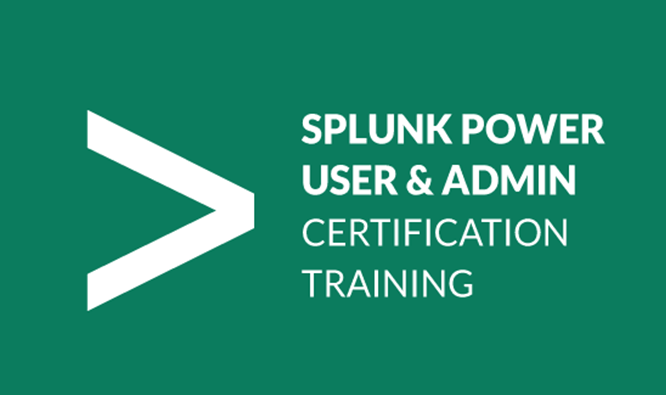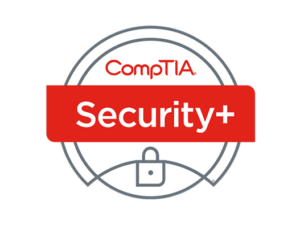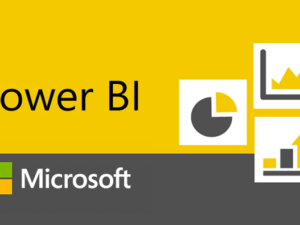This Splunk Power User and Admin Certification Training includes concepts which are required for both Splunk Power Users and Splunk Administrators. By the end of this training, you will learn their roles, responsibilities and be ready for implementation. The Training helps you work with Configuration files and settings, use Searching & Reporting commands, use various Knowledge objects, and finally create Dashboards for visualization with the help of real-life Use-Cases.
Splunk Training & Certification- Power User & Admin
- Description
- Curriculum
- FAQ
- Reviews

After completing our Splunk Power User & Admin training, you should be able to:
- Understand Splunk Power User/ Admin concepts
- Apply various Splunk techniques to visualize data using different graphs and dashboards
- Implement Splunk in the organization to Analyze and Monitor systems for operational intelligence
- Configure alerts and reports for monitoring purposes
- Troubleshoot different application logs issues using SPL (Search Processing Language)
- Implement Splunk Indexers, Search Heads, Forwarder, Deployment Servers & Deployers
Splunk is leading Analytics tool which helps in Server Monitoring, Data Analytics & Data Visualization. Splunk captures, indexes, and correlates real-time data in a searchable repository from which it can generate graphs, reports, alerts, dashboards, and visualizations. This training certifies and lets you grab the top paying Splunk Admin/ Power User jobs. This training also makes Splunk, the ideal strategic platform for companies looking to solve data analytics issues of any size.
- IT Operations, IT Monitoring, IT Support, & Data Center teams.
- Business Analysts and Data Analysts who want to gain knowledge of Splunk development for creating Apps and Dashboards
As such, there are no pre-requisites for learning Splunk. However, it is highly recommended for professionals coming from IT Operations and analytics domain.
-
1Introduction to Machine Data
Goal: In this module, you will get introduced to Machine Data, understand the challenges it presents, and how Splunk can be leveraged to gain Operational Intelligence. Get introduced to various components of Splunk along with how they can be installed.
Objective: Upon completing this module, you should be able to:
• Explain the basics of Splunk and Splunk Licensing options
• Install and configure Splunk Search Heads, Indexer, Heavy, and Universal Forwarders
Topics:
• What is Machine Data & its challenges?
• Need for Splunk and its features
• Splunk Products and their Use-Case
• Download and Install Splunk
• Splunk Components: Search Head, Indexer, Forwarder, Deployment Server, & License Master
• Splunk Architecture
• Splunk Licensing options
Hands On
• Setting up Splunk Enterprise environment
• Setting up Search Heads, Indexer, Heavy, and Universal Forwarders
-
2User Management
Goal: In this module, you will learn how to create and manage users, understand the Splunk Admin role and responsibilities, the architecture of Splunk Index and work with Splunk Configuration files.
Objective: Upon completing this module, you should be able to:
• Configure the. conf files
• Create and Manage users
Topics:
• Introduction to Authentication techniques
• User Creation and Management
• Splunk Admin Role & Responsibilities
• Indexes
• Data Ageing
• Introduction to Splunk configuration files (7)
• Managing the. conf files
Hands On
• Creating and Managing users
• Manage and Modify the Configuration files
• Create index using the indexes.conf file with various retention period and other functionalities of buckets
-
3Data Ingestion, Splunk Search, and Reporting Commands
Goal: Learn the various Splunk Data onboarding techniques and query that data with basic and advanced Splunk commands. Use different keywords to search and filter the Indexed data based on the requirements.
Objective: Upon completing this module, you should be able to:
• Perform Data onboarding to Splunk
• Query using basic and advanced Splunk commands
• Use different keywords to search and filter indexed data based on any individual team requirement
Topics:
• Learn the various data onboarding techniques: -
• Via flat files
• Via UF (Universal Forwarder)
• Implement Basic search commands in Splunk: -
Fields, Table, Sort, Rename, Search
• Understand the use of time ranges while searching
• Learn Reporting & Transforming commands in
Splunk: - Top, Rare, Stats, Chart, Timechart, Dedup, Rex
Hands-On:
• Data onboarding via Universal forwarder and flat files
• Basic and advanced Splunk search commands
• Understand the use of time ranges while searching
-
4Knowledge Objects-I
Goal: Learn about fields and ways to extract them, Create and use Event Types in search while creating/ modifying alerts.
Objective: Upon completing this module, you should be able to:
• Know what is Splunk knowledge
• Learn about the various categories of Splunk Knowledge Objects
• Explain what is a Field
• Learn what is Field Extraction and how to create Field Extractions
• Learn what are Event types and how to create Event types
• Understand what is a Transaction and how to create Transactions
Topics:
• Splunk Knowledge
• Categories of Splunk Knowledge
• Fields
• Field extraction
• Event types
• Transactions
Hands-On:
Use the following Knowledge objects:
• Field extractions
• Event types
• Transactions
-
5Knowledge Objects-II
Goal: In this module, you will learn to create and define Lookups, create Tags to use them in search, create and manage Field aliases and Data Models.
Objectives: Upon completing this module, you should be able to:
• Create and define Lookups
• Work with Lookup editor
• Understand the several types of Workflow actions
• Create and manage Tags and field aliases
• Understand how Data model structures the unstructured data
Topics:
• What are lookups?
• Defining a lookup
• Configuring an automatic lookup
• Using the lookup in searches and reports
• Workflow action
• Tags
• Creating and managing tags
• Defining and searching field aliases
• Overview of Data Model
Hands on:
• Use the Lookup dashboard
• Use the following Knowledge objects:
• Tags
• Field aliases
-
6Splunk Alerts, Visualizations, Reports,
Goal: In this module, you will learn to schedule alerts, create Reports and Dashboards along with different visualizations.
Objectives: Upon completing this module, you should be able to:
• Schedule alerts
• Learn different visualizations offered by Splunk
• Create Reports and Dashboards along with different visualizations
• Add Reports to Dashboards
Topics:
• Create Alerts triggered on certain conditions
• Different Splunk Visualizations
• Create Reports with search results
• Create Dashboards with different Charts and other visualizations
• Set permissions for Reports and Dashboard
• Create Reports and schedule them using cron schedule
• Share Dashboard with other teams
Hands on:
• Scheduling alerts
• Create Splunk Reports
• Create a Dashboard with various Charts and Graphs
-
7Splunk Clustering Techniques
Goal: Learn how to setup a Cluster of Splunk instances. Implement both Search Head clustering and Indexer clustering in this module.
Objectives: Upon completing this module, you should be able to:
• Install Splunk on Linux OS
• Learn about Splunk Clustering
• Learn about Search Head Clustering
• Understand Indexer Clustering
Topics:
• Install Splunk on Linux OS
• Use the frequently used Splunk CLI commands
• Learn the best practices while setting up a Clustering environment
• Splunk Clustering
• Implement Search Head Clustering
• Implement Indexer Clustering
• Deploy an App on the Search Head cluster
Hands on:
• Configuring Splunk instances via Linux CLI
• Clustering techniques
o Search Hear clustering
o Indexer Clustering
• Deploying Apps and configurations using Deployment server
-
8Case Studies
Goal: In this final module, you will be presented with different Use cases and you will have to solve each of those scenarios. Besides that, you will also be working on an exhaustive Project that will deal with solving a real-time scenario.







